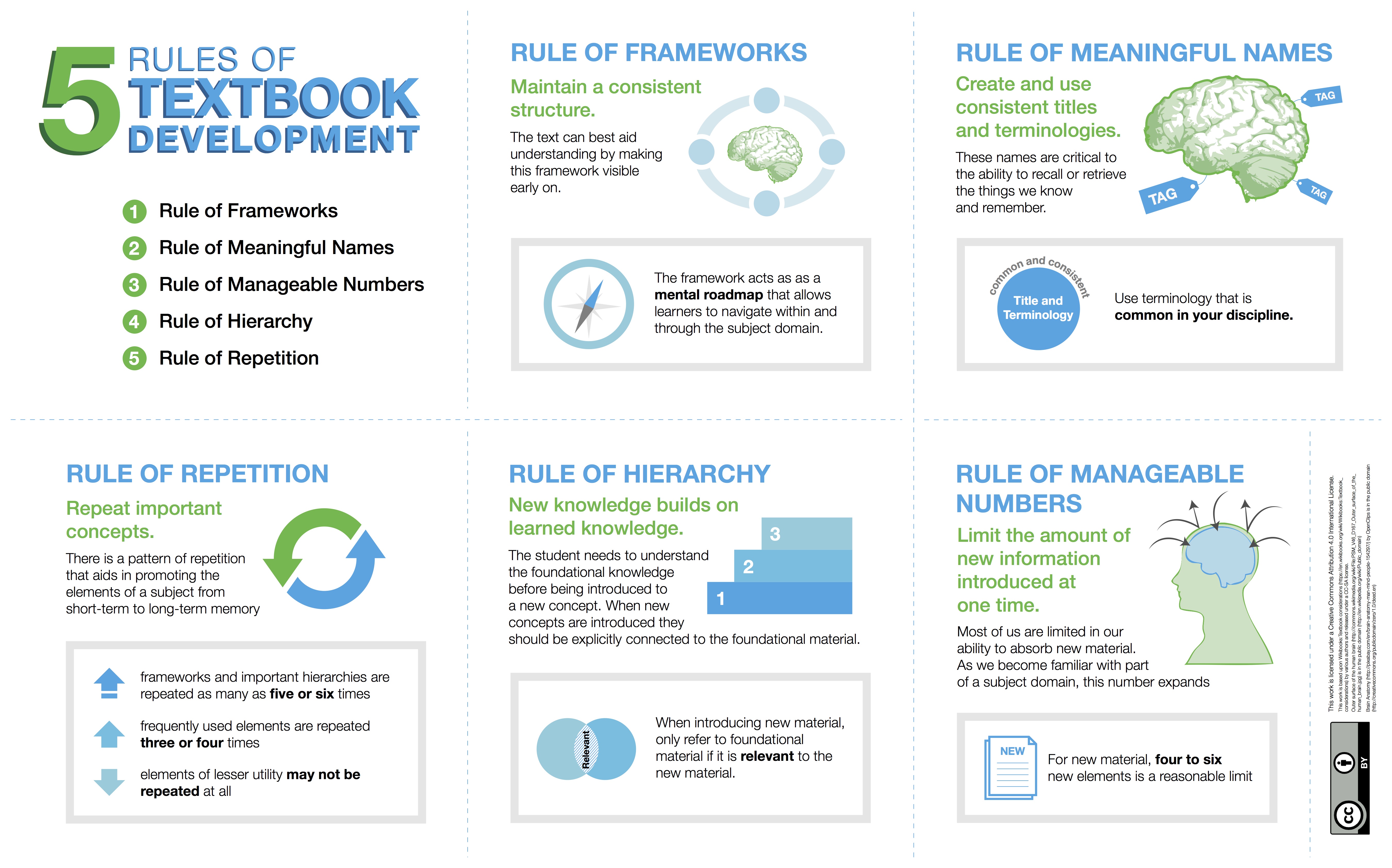Wikibooks put together an excellent overview of textbook considerations and one that BCcampus has adapted for the purposes of our open textbook development.
Textbook Defined
A textbook is an organized body of material useful for the formal study of a subject area. A good textbook is distinguished by the following pedagogical features:
- A discrete, well-bounded scope: all the material should relate to a solid understanding of the subject, usually mixing theory and practice for each topic as it covers the subject domain.
- Use of examples and problems: the student should be able to better grasp each presented concept by following examples, and then applying the concept in structured exercises or problems.
- An internally consistent style: after the first few sections, there should be little or no surprises for the student in terms of layout and presentation of material. The texts user can get comfortable with the layout, the tempo of presentation, and the pattern of figures, illustrations, examples and exercises.
- Utility for future reference: once reviewed, the textbook should isolate material that is useful to the future application of subject knowledge in well organized appendices and tables.
- A structure that makes sense: the textbook is not just a collection of useful material, it is a guide to the student for an order of review which will aid in mastering the subject area.
Textbook Structure
Topics are presented in major parts, chapters, sections and subsections that are organized in a way that facilitates understanding. This means that the text’s organization is based on the intersection of two requirements. The first of these are the requirements of the subject domain. Since most textbooks are developed by, or based on the contributions of subject matter experts, this requirement is usually well attended to.
The second requirement is defined by the limits of the student’s mind. Cognition is a common human ability, but its needs and limits are frequently ignored by those who have already mastered a subject area. To make the best use of the student’s abilities, some rules can be spelled out for the structuring and presentation of ideas, concepts, and material.
These rules should include:
- Rule of Frameworks: Maintain a consistent structure. The structure acts as a mental roadmap that allows learners to navigate within and through the subject domain. To best aid in understanding, the structure should be visible early on.
- Rule of Meaningful Names: Create and use consistent titles and terminologies. Use terminology that is common in your discipline. These names are critical to the ability to recall or retrieve the things we know and remember.
- Rule of Manageable Numbers. Limit the amount of information introduced at one time. For new material, four to six new elements are a reasonable limit. Most of us are limited in our ability to absorb new material. As we become familiar with part of a subject domain, this number expands.
- Rule of Hierarchy. New knowledge builds on learned knowledge. When introducing new material, only refer to foundational material if it is relevant to the new material. The student needs to understand the foundational knowledge before being introduced to a new concept. When new concepts are introduced they should be explicitly connected to the foundational material.
- Rule of Repetition. Repeat important concepts. For example, frameworks and important hierarchies are repeated as many as five or six times; frequently used elements are repeated three or four times; and elements of lesser utility may not be repeated at all. There is a pattern of repetition that aids in promoting the elements of a subject from short-term to long-term memory.
The Infographic
From this framework, BCcampus created the following infographic based on the 5 rules.

Text credit: Wikibooks:Textbook Considerations by various authors is used under a CC-BY-SA 3.0 license
